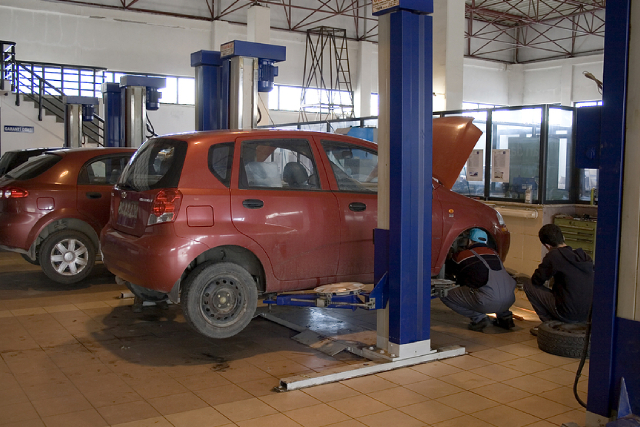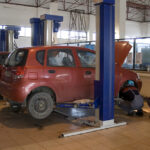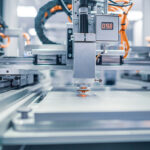Sheet metal fabrication plays a pivotal role in the automotive industry, shaping the structural integrity, aesthetic appeal, and functional components of vehicles. This manufacturing process involves cutting, bending, and assembling flat metal sheets into desired shapes and sizes, contributing to everything from the body panels to the intricate engine components.
The automotive industry’s reliance on sheet metal fabrication is driven by the need for precision, durability, and efficiency. This article explores the various aspects of sheet metal fabrication in the automotive sector, highlighting its significance, techniques, applications, and future trends.
Significance of Sheet Metal Fabrication in Automotive Manufacturing
Here are some key reasons why sheet metal fabrication is indispensable in automotive manufacturing:
1. Durability and Strength: Sheet metals such as steel, aluminium, and titanium provide the necessary strength to withstand the rigours of automotive use, including impacts, environmental exposure, and wear and tear.
2. Lightweight Construction: Modern automotive designs emphasise fuel efficiency and reduced emissions. Aluminium and other lightweight metals are extensively used to lower vehicle weight without compromising strength and safety.
3. Cost-Effectiveness: Sheet metal fabrication processes can be highly automated, leading to lower labour costs and consistent quality. This is crucial for mass production in the automotive industry.
4. Versatility: Sheet metal can be fabricated into a wide range of complex parts and components, from large body panels to small brackets and fasteners. This versatility makes it a cornerstone of automotive manufacturing.
5. Precision and Consistency: Advanced technologies like CNC machining and laser cutting ensure high precision and repeatability, which are essential for maintaining quality standards in automotive production.
Techniques in Sheet Metal Fabrication
Several techniques are employed in sheet metal fabrication to produce the various parts and components required in automotive manufacturing. These techniques include:
1. Cutting: Cutting methods such as laser and plasma cutting are used to accurately cut sheet metal into desired shapes. Laser cutting is particularly favoured for its precision and ability to cut intricate designs. Plasma cutting is suitable for cutting thicker metal sheets.
2. Bending: Bending involves deforming sheet metal along a straight axis to achieve the required angles and shapes. Press brakes are commonly used for this purpose, offering precise control over the bending process.
3. Stamping: Sheet metal stamping involves the use of dies and punches to shape sheet metal by applying pressure. This process is highly efficient for producing large quantities of identical parts, such as body panels and structural components.
4. Forming: Forming encompasses various processes to create complex shapes and contours.
5. Welding and Joining: Welding techniques are used to join sheet metal parts. These methods ensure strong, durable bonds necessary for vehicle integrity.
Applications of Sheet Metal Fabrication in the Automotive Industry
Sheet metal fabrication is integral to various aspects of automotive manufacturing, from the exterior body to internal components. Some key applications include:
1. Body Panels: The exterior body of a vehicle, including doors, hoods, fenders, and roofs, is primarily made from sheet metal. These panels are designed to provide structural strength and aerodynamic efficiency while contributing to the vehicle’s aesthetic appeal.
2. Chassis and Frame: The chassis and frame form the backbone of a vehicle, supporting the engine, transmission, and suspension systems. Sheet metal fabrication ensures these components are sturdy, durable, and capable of withstanding the car’s weight.
3. Engine Components: Sheet metal is used to fabricate various engine components, such as cylinder heads, engine blocks, and connecting rods. These parts require high precision and durability to function effectively in the harsh conditions of an engine bay.
4. Interior Components: Interior parts, including dashboard supports, seat frames, and HVAC ducting, are often made from sheet metal. These components contribute to the overall safety, comfort, and functionality of the vehicle.
5. Exhaust Systems: Exhaust components, including mufflers, pipes, and catalytic converters, are fabricated from sheet metal. These parts must withstand high temperatures and corrosive gases, making material selection and fabrication techniques critical.
6. Fuel Systems: Fuel tanks and related components are fabricated from sheet metal to ensure they are robust, leak-proof, and capable of withstanding impacts.
Future Trends in Sheet Metal Fabrication for Automotive Applications
The automotive industry is constantly evolving, driven by advancements in technology, materials, and manufacturing processes. Several trends are shaping the future of sheet metal fabrication in the sector:
1. Advanced Materials: The development of new alloys and composite materials offers improved strength-to-weight ratios, corrosion resistance, and thermal properties. These materials will enhance the performance and efficiency of automotive components.
2. Automation and Industry 4.0: The integration of robotics, IoT (Internet of Things), and AI (Artificial Intelligence) in sheet metal fabrication processes is increasing efficiency, reducing errors, and enabling real-time monitoring and control.
3. Electric Vehicles (EVs): The rise of electric vehicles is driving demand for lightweight, high-strength materials to maximise range and performance. Sheet metal fabrication techniques are adapting to meet the unique requirements of EVs, such as battery enclosures and electric motor housings.
4. Sustainability: There is a growing emphasis on sustainable manufacturing practices, including recycling and reducing waste. Advanced fabrication techniques are being developed to minimise material waste and energy consumption.
5. Customisation and Flexibility: The trend towards customised and flexible manufacturing is leading to the adoption of advanced fabrication technologies that can quickly adapt to changing designs and production volumes.
Conclusion
Sheet metal fabrication is a cornerstone of the automotive industry, enabling the production of high-quality, durable, and precise components essential for modern vehicles. From body panels to engine parts, the versatility and efficiency of sheet metal fabrication make it an invaluable process in automotive manufacturing. As technology advances and the industry evolves, sheet metal fabrication will continue to play a crucial role, driving innovation and shaping the future of automotive design and production.
Besides sheet metal fabrication, Monster Builder also offers CNC machining and 3D printing. Browse our website to find out more.






